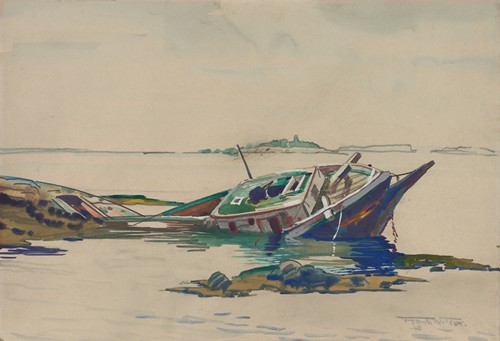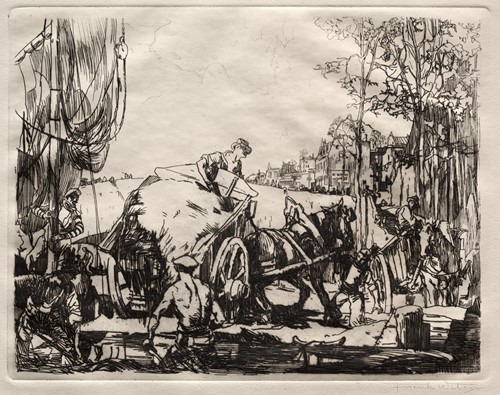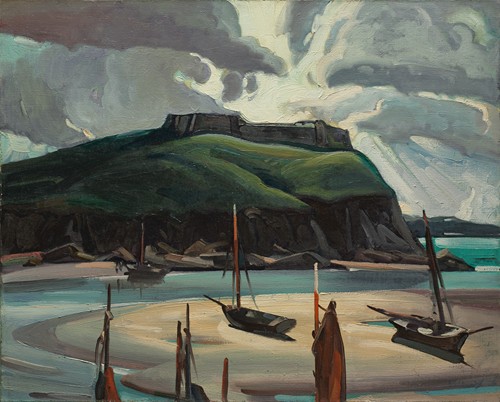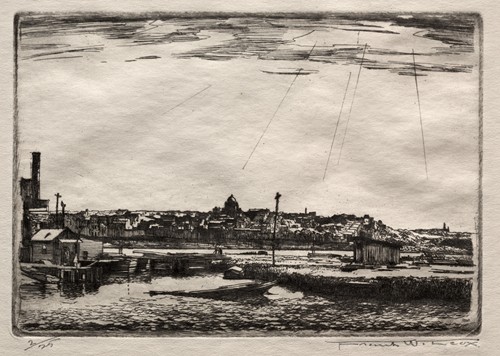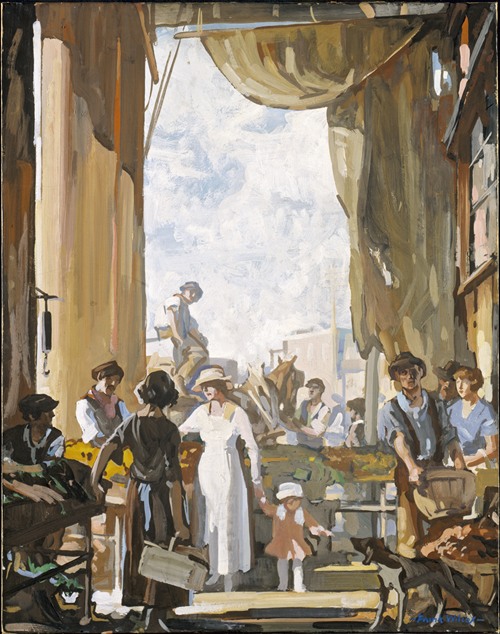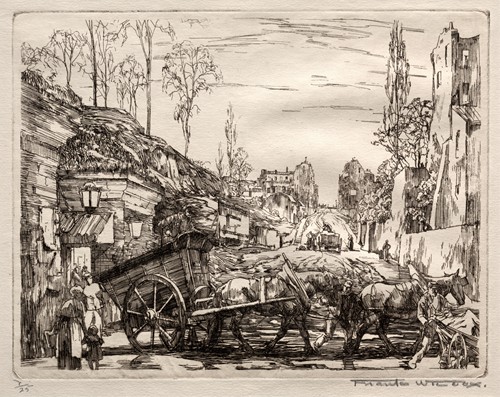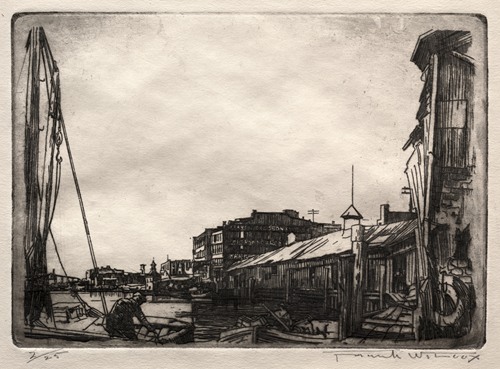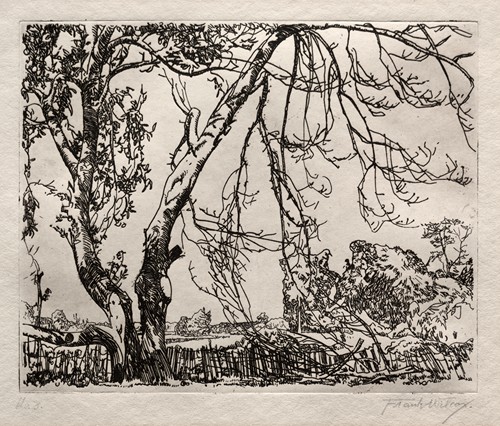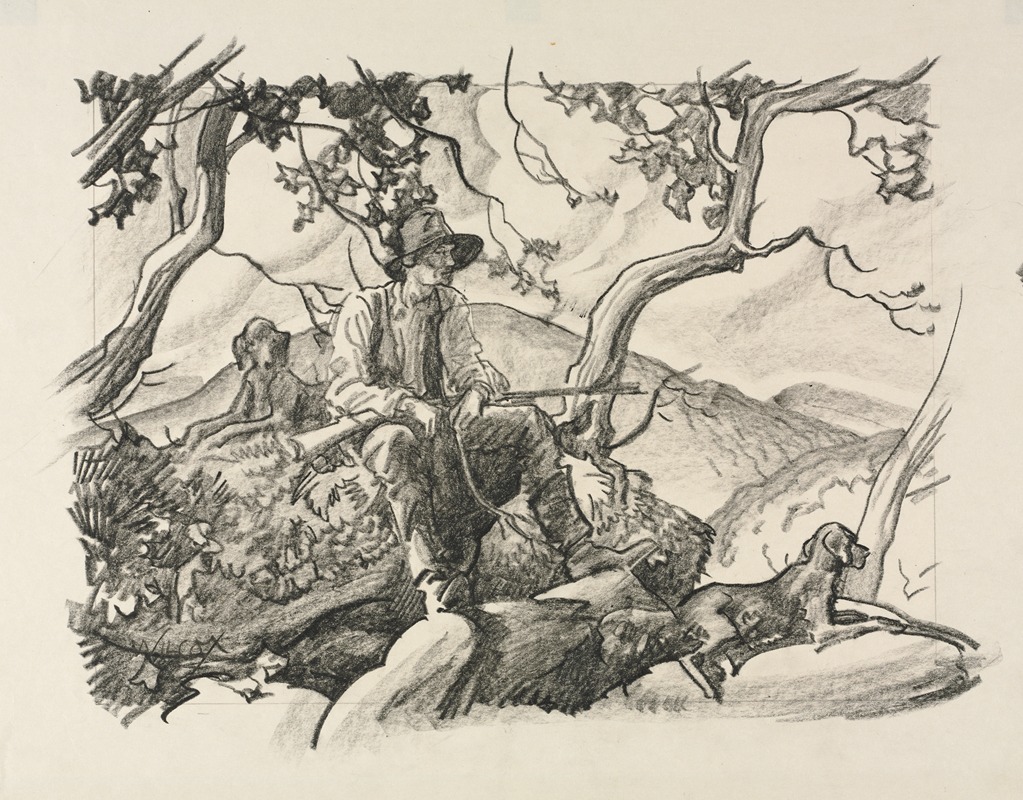

Frank Nelson Wilcox was a modernist American artist and a master of watercolor. Wilcox is described as the "Dean of Cleveland School painters," though some sources give this appellation to Henry Keller or Frederick Gottwald.
Frank Nelson Wilcox, Jr. was born on October 3, 1887, the second of three children to Frank Nelson Wilcox and Jessie Fremont Snow Wilcox at 61 Linwood Street in Cleveland, Ohio. His brother, lawyer and publisher Owen N. Wilcox, was president of the Gates Legal Publishing Company or The Gates Press. His sister Ruth Wilcox was a respected librarian.
Wilcox grew up in Cleveland and frequently visited nearby Brecksville, Ohio, where his family had a farm. While attending Cleveland's Central High School, he took sketch classes from Gottwald at the old Wilson Avenue building of the Cleveland School of Art. His father, a prominent lawyer, died at home in 1904 shortly before Wilcox' 17th birthday.
In 1906 Wilcox enrolled in the Cleveland School of Art under the tutelage of Gottwald, Keller, Louis Rorimer, Horace Potter, and Herman Matzen. He also attended Keller's Berlin Heights summer school beginning in 1909. After graduating in 1910, Wilcox traveled and studied in Europe for a year with his cousin Kenneth Payne. Wilcox preferred sketching and painting outdoors on the streets of Paris to attending classes, but he went often to evening sketch classes at the Académie de la Grande Chaumière. He met a fellow Clevelander, William Zorach (then known as William Finkelstein), at the Louvre. Zorach tried to interest Wilcox in post-impressionism and took him to Académie Colarossi. Wilcox, interested in original research, disliked post-impressionism at the time. In 1911 one of his sketches was accepted for exhibition at the Salon, which led to financial contributions from his father's friends.
On return to Cleveland, Wilcox was disappointed by Keller's reaction to his Paris work. Keller called them "mere colored drawings" and expressed the view that Wilcox should have paid attention to post-impressionism while in France. In August 2011, an exhibition of Wilcox' paintings at the Taylor Galleries was enthusiastically received and helped restore his enthusiasm.
During his second year at Berlin Heights, Keller insisted Wilcox express himself post-impressionistically. He did, and became convinced of its value. The same year Wilcox became acquainted with fellow artist Florence Bard, whom he would later marry. He had been making a little money working at Potter's studio and Cowan Pottery, and now felt the need to earn more and move out on his own. He joined the Cleveland School of Art faculty in 1913. Among his students were Lawrence Edwin Blazey, Carl Gaertner, Paul Travis, Charles E. Burchfield, and Victor Schreckengost.
In his first year of teaching, Wilcox requested the final month off and sailed to Rotterdam, Netherlands in May, 1914. Sketching his way through the Netherlands, Belgium, and Germany in the final days of the Belle Époque, he found himself in Munich when World War I broke out. He left for Antwerp to return home, but had to return to Germany because he could not exchange his money. There the Germans arrested him twice the same day in Cologne on suspicion of espionage. His steamship ticket allowed his release, and he took a train to Rotterdam. Here he caught the last ship for New York. Liege had already fallen.
Wilcox married Bard in 1916, and they spent most of their honeymoon painting in Berlin Heights with Keller. They had one daughter, Mary. In 1918 he joined the Cleveland Society of Artists, a conservative counter to the Bohemian Kokoon Arts Club to which Wilcox also belonged, and would later serve as its president. He also began teaching night school at the John Huntington Polytechnic Institute at this time, and taught briefly during his retirement at Baldwin-Wallace College.
Wilcox traveled and painted extensively throughout his life, but never learned to drive. Affected by palsy in his later years, his hands would shake until his brush touched the paper, then would become steady until the stroke was complete. Wilcox died on April 17, 1964, having taught at the Cleveland School of Art (now Cleveland Institute of Art or CIA) for over 40 years. Today CIA awards an annual scholarship prize in his name to students majoring in printmaking.
